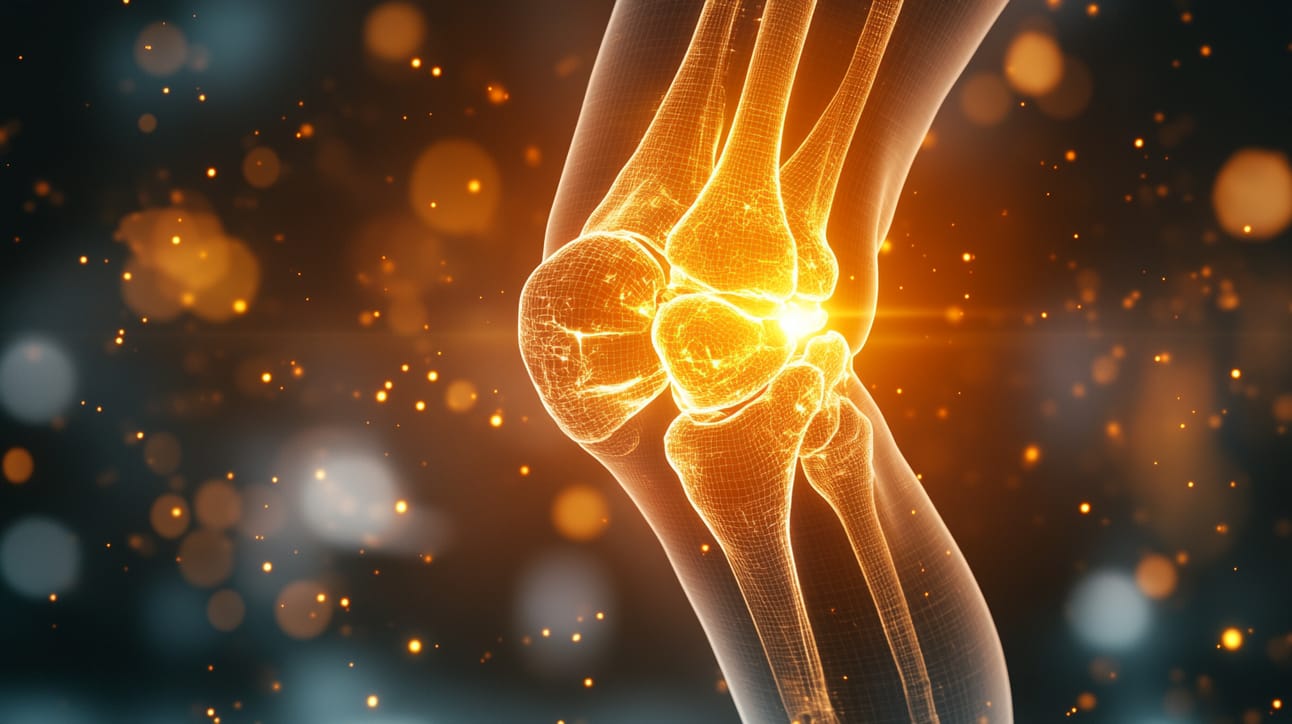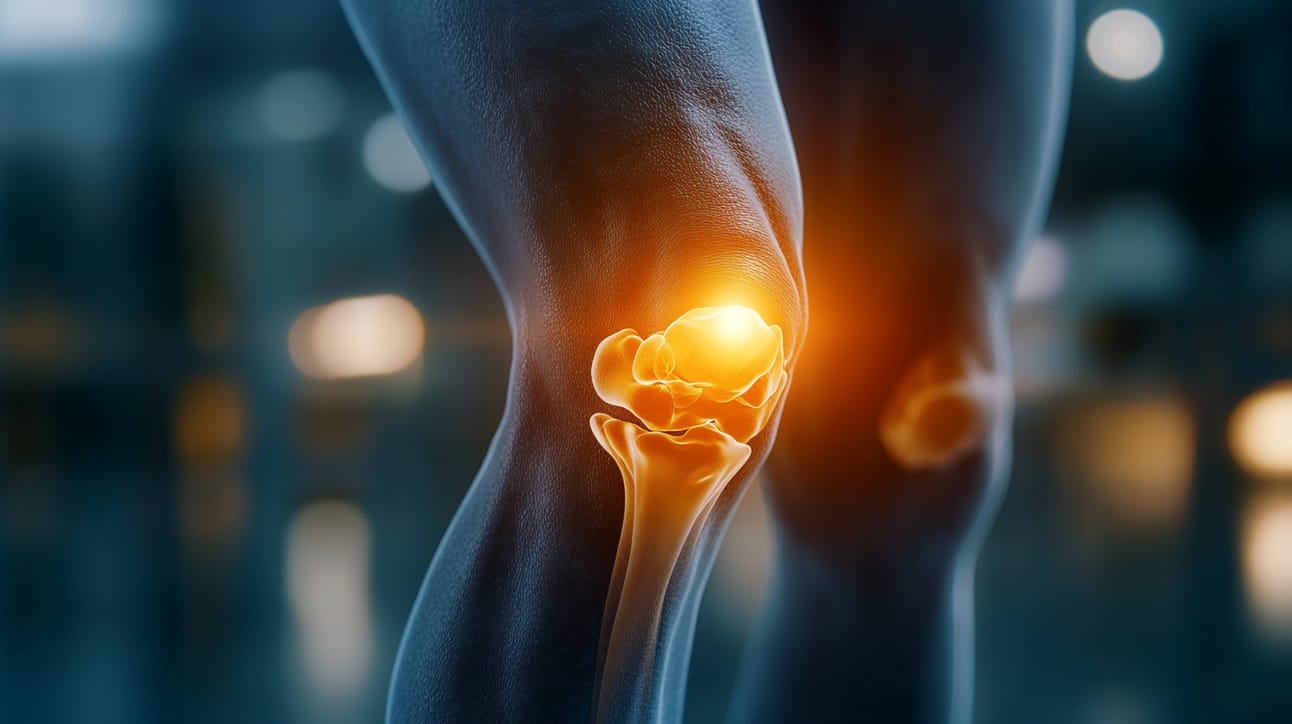- 40-something
- Posts
- The ultimate 7-day meal plan for strong bones and pain-free joints
The ultimate 7-day meal plan for strong bones and pain-free joints
Aligned with a low-carb ketogenic diet and intermittent fasting.

Maintaining strong bones and flexible, pain-free joints is crucial for a healthy, active lifestyle at any age. Whether you're in your 20s or 60s, your diet plays a pivotal role in supporting bone density and joint health. The right balance of nutrients can prevent bone loss, reduce the risk of fractures, and ease joint discomfort. So, what does the ultimate bone-strengthening and joint-friendly diet look like? Let’s break it down.

But first… Before I detail a 7-day meal plan, it’s vital that you get to know the essential nutrients for skeletal health, the best sources, and how much you need of each one.
Nutrients for bones and joints
1. Calcium: The Foundation of strong bones
Calcium is the star mineral for bone health. It makes up the bulk of your bones and teeth, so it's essential to get enough daily. As you age, your body absorbs less calcium, making it even more important to maintain high levels through food.
Best sources: Dairy products like yoghurt and cheese, leafy greens such as kale, bok choy, and broccoli, fortified plant-based milks (almond, soy, oats), sardines and salmon (with bones).
Daily goal: Most adults need around 1,000-1,200 mg of calcium per day.
2. Vitamin D: Helping bones absorb calcium
Calcium needs vitamin D to be absorbed effectively by the body. Without enough vitamin D, even a calcium-rich diet won’t do much to strengthen bones. This nutrient is also essential for maintaining muscle function, which reduces the risk of falls and injuries.
Best sources: Sunlight exposure (15-30 minutes a day can help your body produce it), fatty fish like salmon, mackerel, and tuna, egg yolks.
Daily goal: Aim for 600-800 IU (international units) per day. Some people may need more based on their location and sun exposure.
3. Omega-3 fatty acids: Reducing joint inflammation
Omega-3 fatty acids are essential for reducing inflammation, which can lead to joint pain and stiffness. These healthy fats keep joints lubricated, helping to reduce conditions like arthritis and other joint-related issues.
Best sources: Fatty fish (salmon, sardines, trout), chia seeds and flaxseeds, walnuts, algal oil (a plant-based source of omega-3s).
Daily goal: Aim for at least 1.1 grams of omega-3s daily for women and 1.6 grams for men.
4. Magnesium: Enhancing bone structure
Magnesium supports bone density and strength by helping convert vitamin D into its active form. It also plays a role in muscle and nerve function, keeping your body’s systems in balance and reducing muscle cramps that may exacerbate joint pain.
Best sources: Nuts (almonds, pumpkin seeds), legumes (black beans, lentils), leafy greens (spinach, Swiss chard).
Daily goal: Most adults need around 310-420 mg of magnesium per day.
5. Vitamin K2: Supporting bone mineralisation
Vitamin K helps regulate calcium in the bones and aids in bone mineralisation, which is the process of hardening bones to make them stronger. It also helps protect against osteoporosis by ensuring that calcium goes to the bones instead of soft tissues.
Best sources: Leafy green vegetables (kale, spinach, collard greens), Brussels sprouts, broccoli, fermented foods (like natto).
Daily goal: Women need about 90 mcg per day, and men need around 120 mcg.
6. Collagen: Promoting joint flexibility
Collagen is the most abundant protein in your body, making up a large portion of your skin, cartilage, and connective tissues. As we age, collagen production slows down, leading to joint pain and stiffness. Eating foods rich in collagen or those that promote its production can help maintain joint flexibility and reduce discomfort.
Best sources: Bone broth, gelatine, chicken and fish skin, vitamin C-rich foods (which help collagen synthesis): citrus fruits, berries, bell peppers.
7. Antioxidants: Fighting joint inflammation
Antioxidants, especially vitamins C and E, fight oxidative stress and inflammation, both of which can contribute to joint pain and stiffness. These powerful nutrients work to protect your cells from damage and maintain overall joint health.
Best sources: Berries (blueberries, strawberries, raspberries), Citrus fruits (oranges, grapefruit), Bell peppers, Nuts, dark chocolate, green tea.
8. Hydration: Keeping joints lubricated
Dehydration can lead to joint discomfort since cartilage in the joints is made up of water. Proper hydration keeps joints lubricated and reduces friction, preventing pain and stiffness. Make sure to drink enough water throughout the day, especially after physical activity.
Daily goal: Aim for at least 8 cups of water per day, more if you're active.
9. Avoid excessive salt and sugar
While you focus on nutrient-rich foods, it’s important to avoid excessive salt and sugar. High sodium intake can leach calcium from your bones, weakening them over time, while high sugar levels can increase inflammation in your joints.
Tip: Limit processed foods, sugary drinks, and snacks, and opt for whole, unprocessed alternatives.
The 7-day meal plan
This two-meal-a-day plan keeps you in ketosis while practicing intermittent fasting, thus giving your bones and joints the nutrients they need with fewer sugar spikes that promote inflammation. Loads of anti-inflammatory foods are incorporated to fight inflammation for an internal environment that’s conducive to healing.
Note: The eating window: 12 p.m. – 8 p.m. enables intermittent fasting in combination with a low-carb keto diet.
Day 1:
Brunch
Scrambled eggs with spinach and avocado cooked in olive oil
Grilled chicken sausage
Keto-friendly bone broth (collagen-rich)
Dinner
Grilled salmon with steamed broccoli and a drizzle of olive oil
A handful of almonds for magnesium
Day 2:
Brunch
Avocado egg salad (avocados, boiled eggs, mayo) served over a bed of arugula
A few macadamia nuts
Dinner
Keto taco bowl: ground beef, guacamole, cheese, lettuce, and sour cream
A handful of walnuts for omega-3s
Day 3:
Brunch
Omelette with cheese, spinach, and mushrooms cooked in butter
Grilled chicken slices
Dinner
Baked chicken breast with roasted Brussels sprouts and sautéed garlic mushrooms
Keto-friendly dark chocolate square
Day 4:
Brunch
Turkey lettuce wraps with avocado, cheese, and a dollop of sour cream
Cucumber slices with olive oil
Dinner
Grilled lamb chops with roasted cauliflower and garlic butter
Keto chia pudding
Day 5:
Brunch
Egg muffins with spinach, cheese, and grilled chicken bits
Keto-friendly bone broth
Dinner
Grilled cod with avocado salsa and roasted zucchini
A handful of sunflower seeds
Day 6:
Brunch
Chicken Caesar salad (extra avocado) with homemade Caesar dressing
Keto guacamole with cucumber slices
Dinner
Grilled steak with sautéed green beans and mushrooms
Keto cheese crisps
Day 7:
Brunch
Keto avocado smoothie with almond milk, chia seeds, and MCT oil
Scrambled eggs with cheese and kale
Dinner
Keto beef stew (beef, bone broth, celery, and zucchini)
A square of dark chocolate for antioxidants
A nutrient-dense, low-carb diet coupled with intermittent fasting is an excellent way to promote healthy bones and joints, and in the long-term, alleviate and manage all sorts of skeletal issues including pain and bone loss. Stock up on the supplements you need, stick to a similar low-carb, anti-inflammatory diet as provided above, and eat less often to avoid blood sugar spikes and induce autophagy. If you’re consistent and dedicated, your entire body will reap the benefits.
Pivot away from pain and stay hinged :)
Umayya